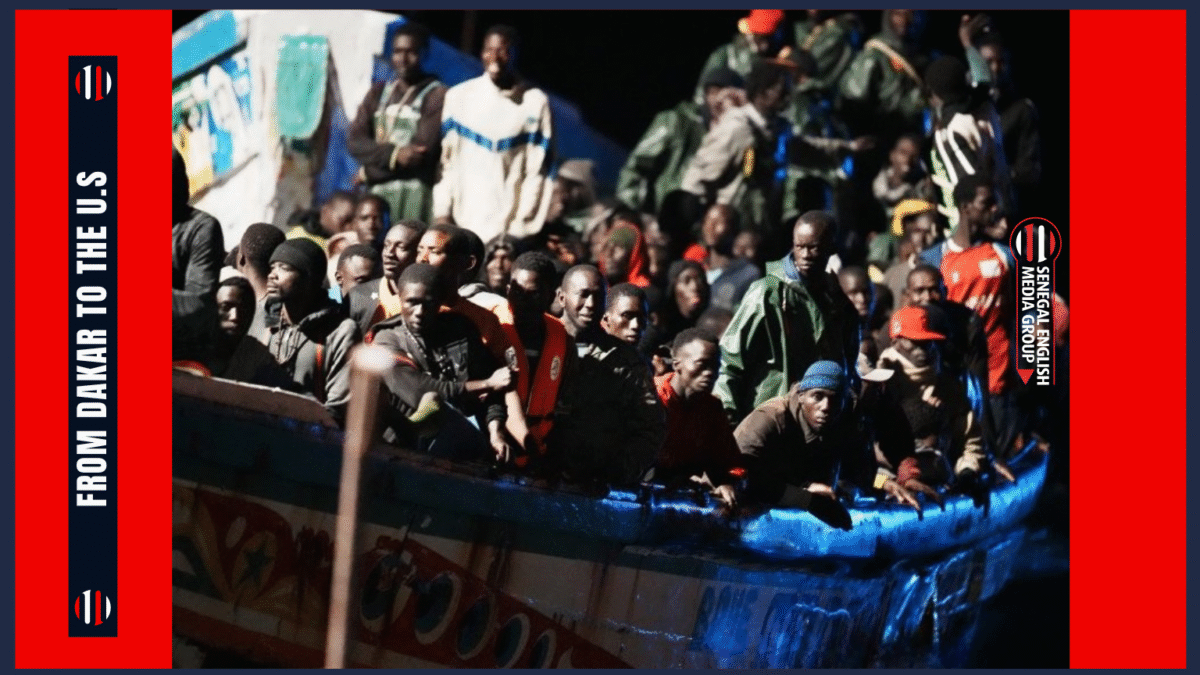
Date: May 2025
Lead Investigator: Fatou Mbagnick Ndiaye
Cybersecurity consultant: Natty
I. Introduction
For many young Senegalese, the dream of building a prosperous future in the United States drives them to embark on a perilous journey through Nicaragua, often with life-threatening consequences. As migration networks evolve and human traffickers exploit desperate individuals, Senegalese families bear not only the emotional strain of separation but also severe financial burdens—many sinking deeper into economic hardship while funding their loved ones’ journey.
This report unveils the hidden dangers, financial realities, and tragic outcomes faced by Senegalese youth attempting to reach the U.S. through irregular migration routes, exposing the exploitative networks and risks associated with this dangerous passage.
II. Impact on Senegalese Families
- Emotional Toll of Separation
The uncertainty and fear surrounding migration deeply affect families left behind.
- Many parents endure sleepless nights, fearing for their children’s safety in unknown territories.
- Families suffer psychological distress, fearing potential arrest, exploitation, or death on the journey.
- With little to no communication, families can go months without news, unsure if their loved ones made it safely.
- Financial Strain
Migration places families in severe economic difficulty, with many selling assets or taking large loans to finance travel.
- Cost Breakdown of the Journey:
- Airfare to Nicaragua: $5,000 – $7,000
- Trafficking fees: $3,000 – $5,000
- Survival expenses while waiting for transport: $2,000 – $4,000
- Total estimated cost: $10,000 – $16,000 per migrant
These staggering costs push families further into poverty, forcing painful sacrifices in the hope of securing a better life for their loved ones.
III. The Dangerous Journey: Exploitation and Risks
- Trafficking and Criminal Networks
Senegalese migrants navigating through Central America face exploitation at every stage:
- Smugglers charge exorbitant fees with false promises of safe passage.
- Many migrants are abandoned or extorted, facing physical abuse, robbery, or forced labor.
- Women and minors are often subjected to trafficking, violence, and coercion in transit camps.
IV. Digital Investigations & Online Trafficking Networks
- How Traffickers Exploit Digital Platforms
Traffickers use WhatsApp, Facebook, and Telegram to lure Senegalese migrants with promises of safe transit, fake visa services, and job offers in the U.S.
- Targeted Ads on Social Media: Exploitative recruiters post ads promising “guaranteed travel” and “legal entry” into America—concealing the dangers ahead.
- Encrypted Smuggling Communications: Traffickers hide operations using private channels on Signal and WhatsApp, making law enforcement interventions difficult.
- Deep Web Transactions: Criminal networks launder migration payments through cryptocurrency wallets and offshore accounts, bypassing traditional tracking.
2. Case Study: Senegalese Victims of Digital Scams
In 2024, reports emerged of fake agencies operating in Senegal, demanding large upfront payments for non-existent U.S. visas.
- Some migrants paid as much as $5,000 for fraudulent processing fees, only to discover they were being sent into human trafficking routes instead.
- Digital recruitment has led to an increase in undocumented migrants falling into debt traps, forced labor, or dangerous crossings.
3. Tracking the Networks: Senegalese Cybercrime Investigators Step In
Law enforcement is beginning to trace online trafficking rings, but limited resources and lack of cybersecurity expertise have hindered widespread intervention.
- Senegalese authorities are increasing cooperation with digital forensics teams to dismantle WhatsApp trafficking networks.
- AI-powered tracking tools may help detect fraudulent migration ads, identifying traffickers before they exploit vulnerable migrants.
V. Evidence of Deaths and Disappearances
Migrants rarely make it to the U.S. unscathed, with confirmed cases of fatalities and missing persons.
- 2024 Tragic Cases:
- 959 Senegalese migrants died at sea attempting to reach the Canary Islands, according to Amnesty International.
- Cases of missing Senegalese individuals across transit countries remain unsolved, leaving families with no answers.
- Six Senegalese men drowned while attempting to cross the Rio Grande into Texas.
These gruesome realities, often covered up or ignored, underscore the deadly risks hidden behind migration narratives.
VI. Senegal’s Response: Policies and Challenges
- Government Actions
The Senegalese government has taken steps to curb irregular migration, including:
- Launching awareness campaigns to educate youth on migration risks.
- Strengthening bilateral agreements with transit countries to manage border security.
- Enhancing economic programs to increase job opportunities at home.
- Ongoing Challenges
Despite these efforts, Senegal faces continued struggles in deterring human trafficking networks and providing viable local opportunities for youth.
- Limited enforcement capacity allows traffickers to circumvent weak border security.
- Economic hardships push youth toward migration as an escape from poverty.
- Families still see migration as a necessity, fueling an endless cycle despite known risks.
VII. Conclusion: A Crisis Demanding Urgent Action
The Senegalese migration crisis through Nicaragua exposes a deep societal challenge, blending economic desperation, trafficking networks, and tragic outcomes into a complex humanitarian issue.
If left unaddressed, the financial burdens on families, exploitation by traffickers, and high mortality rates will only intensify, costing lives and futures.
- Stronger international cooperation is needed to combat traffickers and safeguard Senegalese migrants.
- Increased economic initiatives must offer youth alternative paths to success at home.
- Comprehensive legal frameworks should protect families and prevent migration-related financial crises.
At Senegal English Media Group, we remain committed to uncovering the truth behind migration networks and exposing the realities hidden from mainstream discourse. This crisis demands attention, and we will continue investigating the human toll, financial burdens, and policy failures shaping Senegal’s migration landscape.


